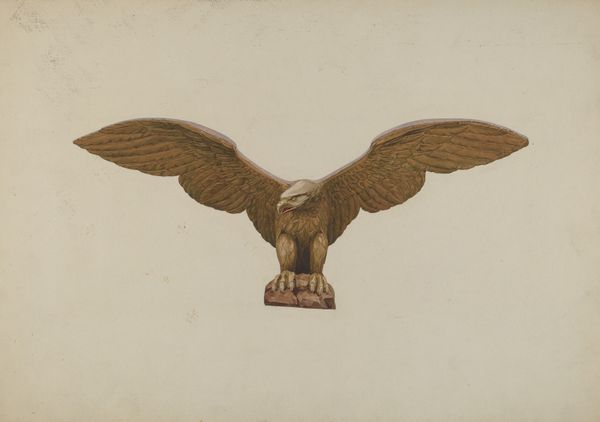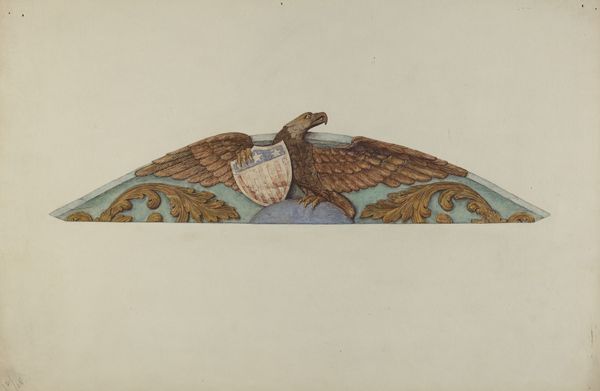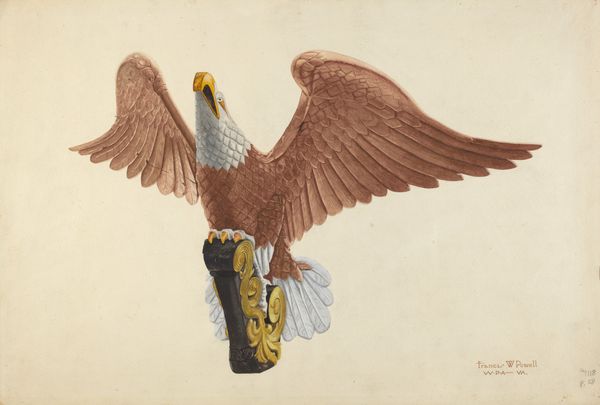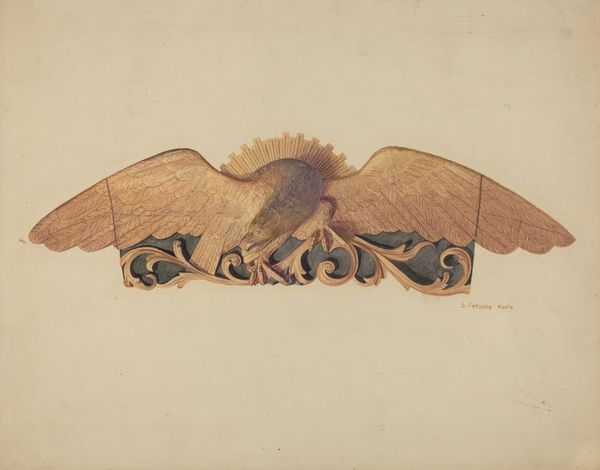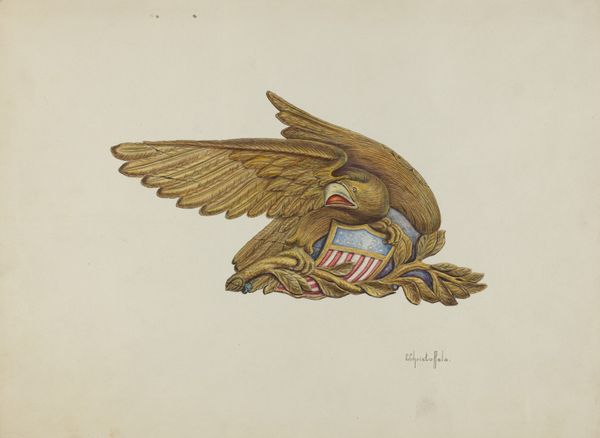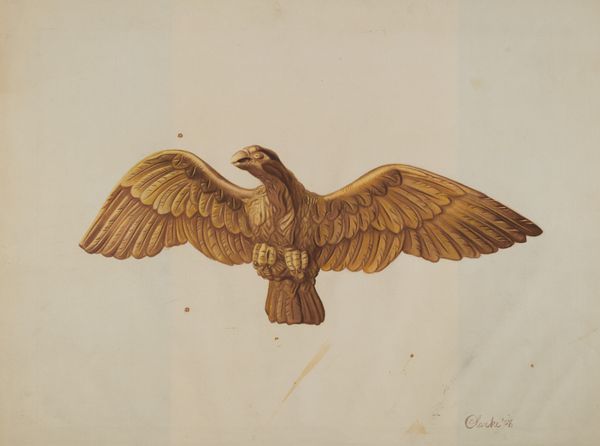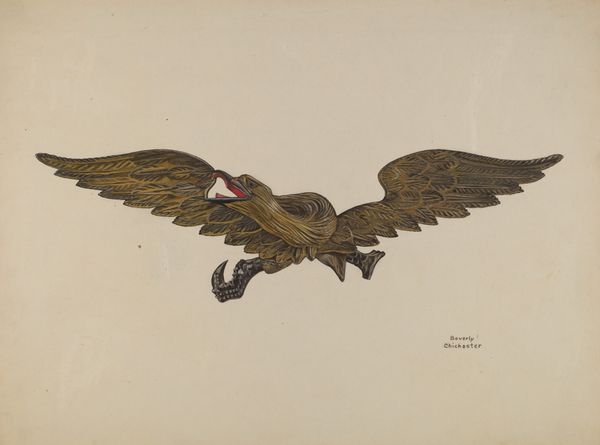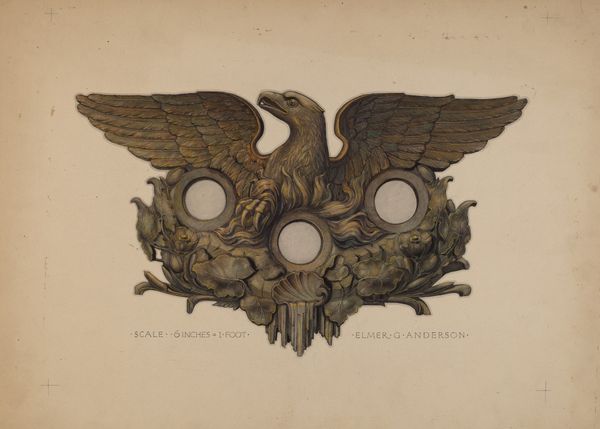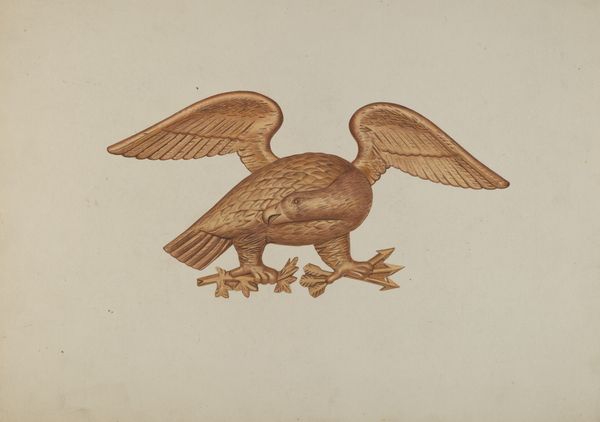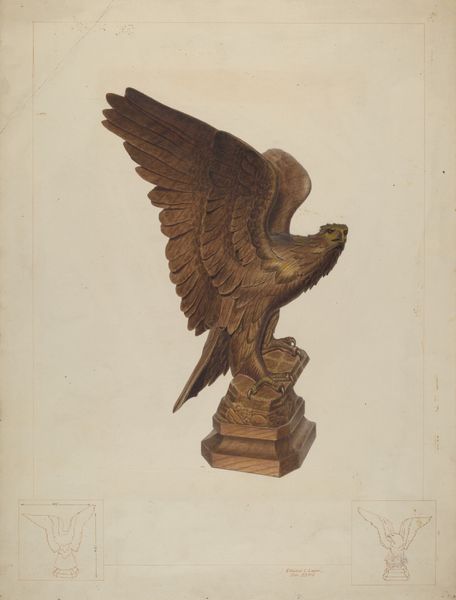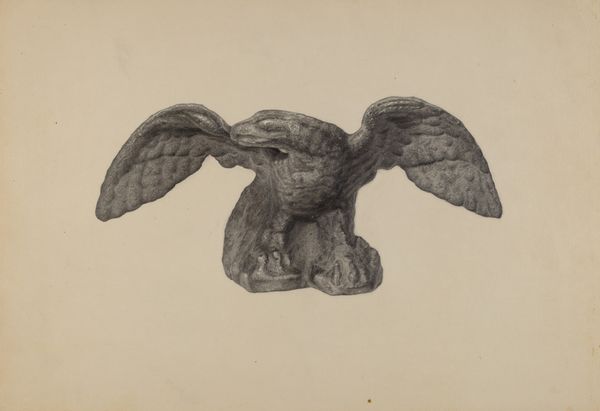
drawing, watercolor
#
drawing
#
charcoal drawing
#
figuration
#
watercolor
#
watercolour illustration
Dimensions: overall: 35.6 x 56 cm (14 x 22 1/16 in.)
Copyright: National Gallery of Art: CC0 1.0
Editor: Here we have Louis Plogsted’s "Eagle," a watercolor and charcoal drawing created in 1938. I’m immediately struck by how stately the eagle appears, perched upon what looks like a globe. What are your initial thoughts on the image? Curator: It’s a fascinating choice of subject and style for the late 1930s. Think about the eagle as a national symbol. Its appearance here, crafted during the lead-up to World War II, encourages questions about how patriotic symbols were being employed and perceived. Editor: That’s interesting. It does have a somewhat propagandistic feel, even with the softness of the watercolors. What role do you think this kind of image played at the time? Curator: Images like this became powerful tools in shaping public opinion. They often appeared in magazines, posters, and even children's books, subtly reinforcing ideas of national pride, strength, and even, potentially, the justification for military action. Look at how the eagle dominates the composition, its wings spread wide. Editor: It almost feels like it's guarding the globe it's standing on. So, this could be viewed as part of a broader strategy of visual persuasion? Curator: Precisely. Consider who commissioned the artwork and where it might have been displayed. Knowing that information would give us more insight into its intended purpose and audience. Who was this artist anyway? Was his practice mostly focused on birds and nature or perhaps on patriotic imagery to serve a broader political purpose? Editor: This really highlights the power of images. I never thought about it that deeply, just viewing the art by itself. Curator: It's important to understand that art doesn’t exist in a vacuum. It's a product of its time, reflecting and influencing the social and political landscape. Editor: I’ll definitely be thinking more about the context surrounding art in the future. Curator: Me too. Looking into the cultural and social climate can add such a meaningful understanding.
Comments
No comments
Be the first to comment and join the conversation on the ultimate creative platform.
